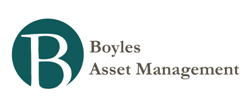Hussman Weekly Market Comment: Too Little to "Lock In"
We've regularly observed that corporate profit margins (and economy-wide, profits as a share of GDP) have a strong tendency to "mean revert" over time - specifically, elevated profit margins are associated with unusually weak earnings growth over the following 5-year period, and depressed profit margins are associated with unusually strong earnings growth over that horizon (see last week's comment, A False Sense of Security ). Notably, the ratio of corporate profits to GDP is presently nearly 70% above its historical norm. Of course, the most common valuation methods used by Wall Street analysts (whether they use the "Fed model" or "forward operating earnings times arbitrary P/E multiple") rely almost exclusively on estimates of year ahead earnings. Embedded in these toy models is the quiet assumption that current profit margins will be sustained indefinitely.
By contrast, a wide range of measures that use "normalized" fundamentals of one form or another are extraordinarily stretched. Andrew Smithers recently took note of the elevated levels of cyclically adjusted P/E ratios and price to replacement cost ("q") and observed "As of 8th March, 2012, with the S&P 500 at 1365.9 , the overvaluation by the relevant measures was 48% for non-financials and 66% for quoted shares. Although the overvaluation of the stock market is well short of the extremes reached at the year ends of 1929 and 1999, it has reached the other previous peaks of 1906, 1936 and 1968."
At 1400 on the S&P 500, the market's overvaluation has now reached 70% on these measures, which have a far stronger correlation with subsequent market returns than the Fed Model or other unadjusted methods using forward operating earnings. This is particularly true over horizons of 4 years or longer.
- Links
Q&A with Guy Spier about his book, The Education of a Value Investor (LINK) Buffett’s Private Analysis of Geico in 1976: ‘Extraordinary’ But ‘Mismanaged’ [H/T Lincoln] (LINK) Aswath Damodaran on corporate break-ups, using EBay and PayPal...
- Hussman Weekly Market Comment: Exit Strategy
Link to: Exit Strategy The S&P 500 set a marginal new high on Friday, in the context of a broad rollover in momentum thus far this year that we view as likely – though of course not certain – to represent a broad cyclical peak of the sort that...
- Hussman Weekly Market Comment: Run, Don't Walk
Wall Street continues to focus on the idea that stocks are "cheap" on the basis of forward price/earnings multiples. I can't emphasize enough how badly standard P/E metrics are being distorted by record (but reliably cyclical) profit margins, which...
- Hussman Weekly Market Comment: A False Sense Of Security
One of the aspects of the market that is most likely to confuse investors here is the wide range of opinions about valuation, with some analysts arguing that stocks are cheap or fairly valued, and others - including Jeremy Grantham, Albert Edwards, and...
- Hussman Weekly Market Comment: Whack-a-mole
As of last week, the S&P 500 has declined to the point where we now expect 10-year total returns averaging about 5.7% annually on the index. This is certainly higher than the 3.4% prospective return we observed earlier this year, but is still a prospective...

